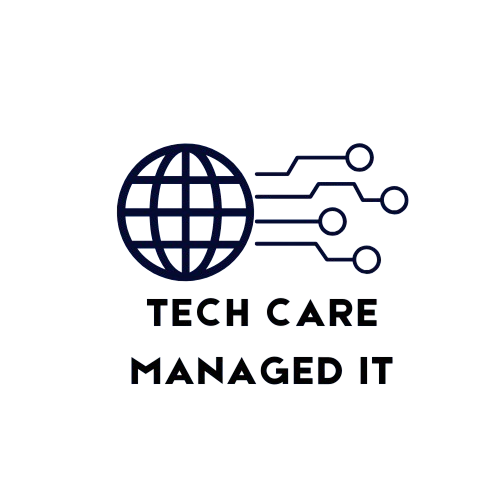Strong collaboration is the backbone of successful projects, and without it, even the best strategies fall apart. Teams need a clear framework to stay aligned, communicate effectively, and adapt to change quickly. Agile Project Management offers exactly that, making it one of the most widely adopted methods for improving teamwork across industries. Organizations like Innerworks International have embraced Agile to create more cohesive teams, deliver faster results, and maintain a culture of accountability and trust. By combining collaboration with Agile practices, businesses achieve both efficiency and innovation.
What is Agile Project Management?
Agile Project Management is a flexible and iterative approach that prioritizes collaboration, adaptability, and customer value. Unlike traditional project management, which often follows rigid step-by-step processes, Agile breaks projects into smaller increments called sprints. This allows teams to regularly review progress, gather feedback, and adjust goals when necessary. The role of collaboration in Agile is vital because progress depends on open communication and shared ownership. Companies like Innerworks International utilize Agile to bridge gaps between departments, encouraging transparency and teamwork throughout the project lifecycle.
The Role of Collaboration in Agile Teams
Collaboration is not just a by-product of Agile—it is its foundation. Agile principles emphasize individuals and interactions over processes and tools, which means effective communication takes center stage. In Agile teams, cross-functional members contribute diverse skills and share accountability for outcomes. Stand-up meetings, sprint reviews, and retrospectives ensure everyone’s voice is heard, creating a cycle of feedback and improvement. Innerworks International highlights this collaborative culture in its projects, ensuring all team members—from developers to stakeholders—are aligned on objectives and progress. This structure reduces silos, strengthens trust, and enhances collective problem-solving.
Key Agile Practices That Improve Team Collaboration
Several Agile practices are specifically designed to foster teamwork and communication:
Daily Stand-ups keep team members aligned by providing a quick space to share updates, raise challenges, and clarify priorities. This daily habit promotes transparency and accountability.
Sprint Planning enables teams to establish shared goals and decide on achievable deliverables. It ensures collaboration from the start, as everyone contributes to defining scope and priorities.
Retrospectives create opportunities for honest reflection, helping teams identify what worked well and what needs improvement. This reinforces a culture of continuous learning.
Task Boards and Visual Management Tools like Kanban boards provide clear visibility into project status, making it easy for everyone to understand progress and workload distribution.
By implementing these practices, Innerworks International helps teams build strong communication rhythms, ensuring collaboration becomes a natural part of their workflow.
Benefits of Agile Project Management for Team Collaboration
Adopting Agile practices brings significant advantages for teamwork:
- Faster decision-making: Regular communication reduces delays and enables quick responses to changes.
- Stronger trust and accountability: Teams that collaborate openly build reliability and mutual respect.
- Greater flexibility: Agile’s adaptability ensures projects can pivot without chaos.
- Improved productivity: Reduced misunderstandings and increased clarity lead to better performance.
Innerworks International has demonstrated that these benefits extend beyond project outcomes, creating a positive workplace culture where collaboration drives both employee satisfaction and customer success.
Common Challenges and How Agile Overcomes Them
Collaboration is not without challenges, especially for large or distributed teams. However, Agile Project Management offers effective solutions.
For remote and distributed teams, communication can suffer due to distance. Agile addresses this by using digital collaboration tools and fostering asynchronous communication. Teams at Innerworks International rely on structured virtual stand-ups and dashboards to stay aligned regardless of location.
When organizations face resistance to change, Agile’s incremental adoption makes it easier for teams to adapt gradually. This reduces pushback and helps stakeholders see tangible benefits quickly.
Another common issue is misaligned goals across departments. Agile mitigates this through shared product visions, sprint goals, and regular reviews, ensuring everyone works toward common objectives.
Best Tools to Support Agile Collaboration
Agile is enhanced by digital tools that streamline communication and project tracking. Popular platforms like Jira, Trello, Asana, and Microsoft Teams are widely used for managing tasks, tracking sprints, and enhancing visibility. Slack and other chat-based tools keep conversations flowing, while integrated dashboards ensure data is accessible in real time.
Innerworks International leverages these tools to align distributed teams, allowing them to collaborate seamlessly and focus on delivering value. By combining the right technology with Agile practices, teams can maximize efficiency and transparency.
Real-World Examples of Agile Improving Collaboration
Agile has proven its value across industries beyond software development. Marketing teams use Agile to coordinate campaigns, HR teams apply it to recruitment projects, and product design teams adopt it for faster innovation cycles. For example, a marketing department using Agile can plan campaigns in sprints, track progress visually, and adapt based on results.
Organizations like Innerworks International have applied Agile methodologies to system integration projects, IT delivery, and digital transformation initiatives. The results consistently show stronger collaboration, fewer miscommunications, and more engaged team members. These real-world examples highlight that Agile is not just a project management style—it is a cultural shift toward collaboration and accountability.
Steps to Start Improving Collaboration with Agile
Improving collaboration with Agile requires intentional steps:
- Assess team needs and challenges to understand where collaboration is breaking down.
- Begin with simple Agile practices such as daily stand-ups and visual task boards.
- Invest in training and Agile coaching to build a common understanding of principles and tools.
- Measure success with KPIs such as team velocity, engagement levels, and delivery outcomes.
Innerworks International often recommends piloting Agile in small teams before scaling across an organization. This ensures lessons learned are applied effectively and that collaboration strengthens gradually across all departments.
Takeaway
Agile Project Management provides a powerful framework for improving collaboration, breaking down silos, and encouraging transparency. By emphasizing communication, feedback, and shared ownership, Agile transforms the way teams operate. Businesses that adopt these practices see stronger trust, higher productivity, and better adaptability in the face of change. Innerworks International has demonstrated time and again that integrating Agile into daily workflows creates lasting improvements in both project outcomes and workplace culture. For organizations aiming to strengthen teamwork, embracing Agile is a proven path forward.
FAQ
What makes Agile better for collaboration than traditional project management?
Agile emphasizes iterative communication, regular check-ins, and shared accountability, which creates a more collaborative environment compared to traditional linear methods. Innerworks International shows that Agile breaks down silos and increases transparency across teams.
How can Agile help remote teams work together effectively?
Agile uses digital collaboration tools, structured meetings, and transparent dashboards to keep remote teams aligned. Organizations like Innerworks International demonstrate that these practices maintain accountability and foster strong connections even across distances.
What are the best Agile practices to start with for improving collaboration?
Starting with daily stand-ups, task boards, and retrospectives is highly effective. These practices are simple to adopt and deliver immediate collaboration benefits. Innerworks International often recommends this approach for new Agile teams.
Can Agile be used outside IT to improve teamwork?
Yes, Agile can be applied to marketing, HR, product development, and other departments. Innerworks International has successfully used Agile in diverse industries, proving its adaptability beyond software development.











